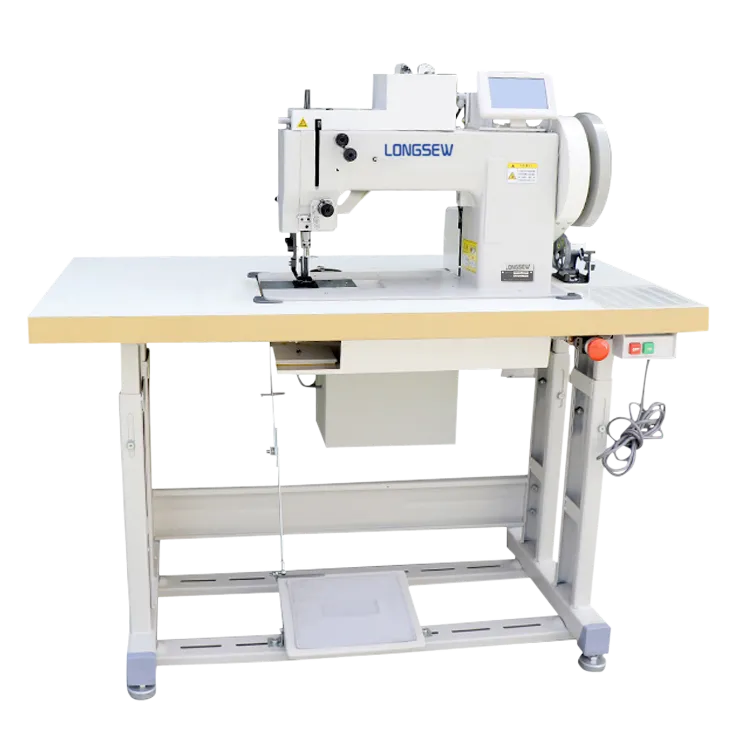what is twin needle sewing used for
Understanding Twin Needle Sewing Uses and Benefits
Twin needle sewing is a technique that involves a special type of sewing machine needle featuring two needles attached to a single shaft. This unique design allows for the simultaneous stitching of two parallel lines, producing decorative effects that enhance the overall aesthetic of a garment or sewing project. In this article, we will explore the uses and benefits of twin needle sewing, making it a popular choice among both amateur and professional seamstresses.
Uses of Twin Needle Sewing
1. Hem Finishing One of the primary uses of twin needle sewing is to finish hems on various fabrics. The twin needle creates two rows of stitches on the front while forming a zigzag stitch on the back. This technique is particularly beneficial for sewing knit fabrics, as it allows for stretch without compromising the garment's integrity.
2. Decorative Stitching Twin needles offer an easy way to add decorative elements to sewing projects. By varying the thread colors and types, sewists can create beautiful patterns and designs. This is especially popular in quilting and home decor, where visual appeal is crucial.
3. Topstitching Topstitching is essential for reinforcing seams and adding a professional touch to garments. Using a twin needle allows for parallel lines of stitching that create a neat, finished look, enhancing the garment's durability.
4. Sewing Flatlock Seams Twin needle sewing is also used to achieve flatlock seams, often seen in activewear and swimwear. This technique minimizes bulk and provides a smooth finish against the skin, making garments more comfortable to wear.
5. Creating Pintucks Pintucks are delicate, tucked pleats that add texture to fabric. Using a twin needle, sewists can easily create pintucks for decorative elements, whether on blouses, skirts, or other apparel.
what is twin needle sewing used for

Benefits of Twin Needle Sewing
1. Time Efficiency With twin needle sewing, you can complete tasks that would typically require multiple passes with a single needle, saving time in the sewing process. This increased efficiency is particularly beneficial during construction phases of garment making.
2. Versatility The twin needle is highly versatile and can be used on various fabrics, including knits, wovens, and more. This adaptability makes it an essential tool in any sewing toolkit.
3. Professional Finish Twin needle sewing mimics the look of serged or coverstitched finishes, which many home sewing machines may not replicate. This results in a more polished and professional look in finished garments, elevating the quality of sewing projects.
4. Enhanced Durability The double stitching created by twin needle sewing not only looks good but also reinforces the seam, providing greater durability. This is particularly important for garments that experience a lot of wear and tear.
5. Reduced Fabric Movement The use of a twin needle can help reduce fabric movement during traditional sewing processes. This ensures more accurate stitching and less chance of puckering, yielding a cleaner and more precise finish.
Conclusion
In conclusion, twin needle sewing is an invaluable technique in the world of sewing that offers both practical and aesthetic benefits. Its applications range from simple hem finishing to creating intricate decorative designs, making it a versatile tool for any sewist. The professional finish, durability, and time efficiency make twin needle sewing an attractive option for enhancing garment quality. Whether you are an experienced seamstress or a beginner, incorporating twin needle techniques into your sewing projects can elevate your craft and expand your creativity. So, next time you consider your toolset, don't overlook the powerful potential of twin needle sewing!
-
Boost Production Efficiency with a Pattern Sewing MachineNewsAug.29,2025
-
Industrial Excellence with the Best Heavy Duty Sewing MachineNewsAug.29,2025
-
Precision and Power with the Best Pattern Sewing MachineNewsAug.29,2025
-
Reliable Bulk Packaging Starts With the Right FIBC Sewing MachineNewsAug.29,2025
-
Advanced Packaging Solutions: Elevate Productivity with Jumbo Bag Sewing Machine and Industrial Stitching EquipmentNewsAug.29,2025
-
High-Performance Solutions for Bulk Packaging: FIBC Sewing Machine and MoreNewsAug.29,2025
-
Maximize Efficiency with an Industrial Cylinder Arm Sewing MachineNewsAug.28,2025


























